Whether or not you’re a grower, if you are interested in the Cannabis industry, you’ve likely held a cannabis seed in your hand, wondered about the actual differences between Indica and Sativa plants, or closely examined a bud for trichomes. One of the great things about naturally derived Cannabidiol (CBD) oil, is that it comes directly from this ancient plant – an important point as “whole-plant medicine” is gaining ground throughout the industry as the most effective way to utilize the therapeutic components of cannabis. Understanding the biological components of cannabis, and how they function for survival, health and reproduction, allows us to appreciate this potent plant and its role.
Until man duplicates a blade of grass, nature can laugh at his so-called scientific knowledge. Remedies from chemicals will never stand in favor compared with the products of nature, the living cell of the plant, the final result of the rays of the sun, the mother of all life. — Thomas Edison
A Legend is Born
The Cannabis plant is native to Asia, where it’s believed to be one of the first crops that humans cultivated – starting as early as the Neolithic Revolution, about 12,000 years ago, when humans transitioned from hunting and gathering to settled agriculture. For a plant that’s been around that long, you’d think we’d have figured out by now how many species there are, and how to categorize them. You’d be wrong of course, as there is little agreement on either front (a problem across the board in biology, as the question “what is a species?” is still without consensus). Cannabis from Afghanistan was first described and named Cannabis sativa by Linnaeus more than 250 years ago. Just over 30 years later, another prominent biologist was given a sample from India, which he named Cannabis indica. A third “species” from Russia was given the name Cannabis ruderalis. Here at Boojum Group, we extract our full-spectrum distillate exclusively from strains of C. sativa.
Indica vs Sativa
These forms have been hybridized, disseminated across the world, and artificially selected to the point where the wild-type is practically non-existent. In the cannabis world today, C. sativa is associated with tall plants, skinny, light-colored leaves, and a more energizing effect on the body; meanwhile C. indica is shorter, broader, darker, and has a more relaxing effect. It also tends to be more generally psychoactive, due to its higher concentrations of THC. The fact that these two plant types can interbreed and produce fertile offspring means that many consider them the same species, and that most of the cannabis on the market today is some combination of these.
Female Plants
Whether we consider them species or subspecies, all cannabis plants have the same basic anatomy. Cannabis is dioecious, which means that it has both male and female plants, as well as some hermaphrodite plants (which exhibit reproductive structures from both sexes). Commercial cannabis comes from the female, whose flowers are composed of bracts. These bracts, or buds, are tiny tear-drop shaped clusters with trichome-covered “sugar leaves” growing amongst them, and are the most potent part of the plant. The flowering site, which occurs at the very top of the plant or the end of large branches (where there is the most access to sunlight and pollination) is called the cola. Females are initially distinguishable by the emergence of tiny white “hairs” which are not in fact hairs, but projections called stigmas. Stigmas start out white, and darken to warm colors, and eventually to brown. Their job is to trap pollen from the male plant and pass its genetic material down to the calyx covered ovule.
Male Plants
Male plants produce pollen, and their pollen sacs hang down in grapelike bunches. Cannabis is anemophilous, meaning it relies on the wind for pollination. Pollen granules carrying genetic information from the male are blown into the air, where the lucky ones find their way to the females’ stigmas, and there each granule is used to fertilize the ovule and produce a single seed for the next generation. Cannabis growers, however, will usually try to stop this process by culling the males or isolating the sexes.
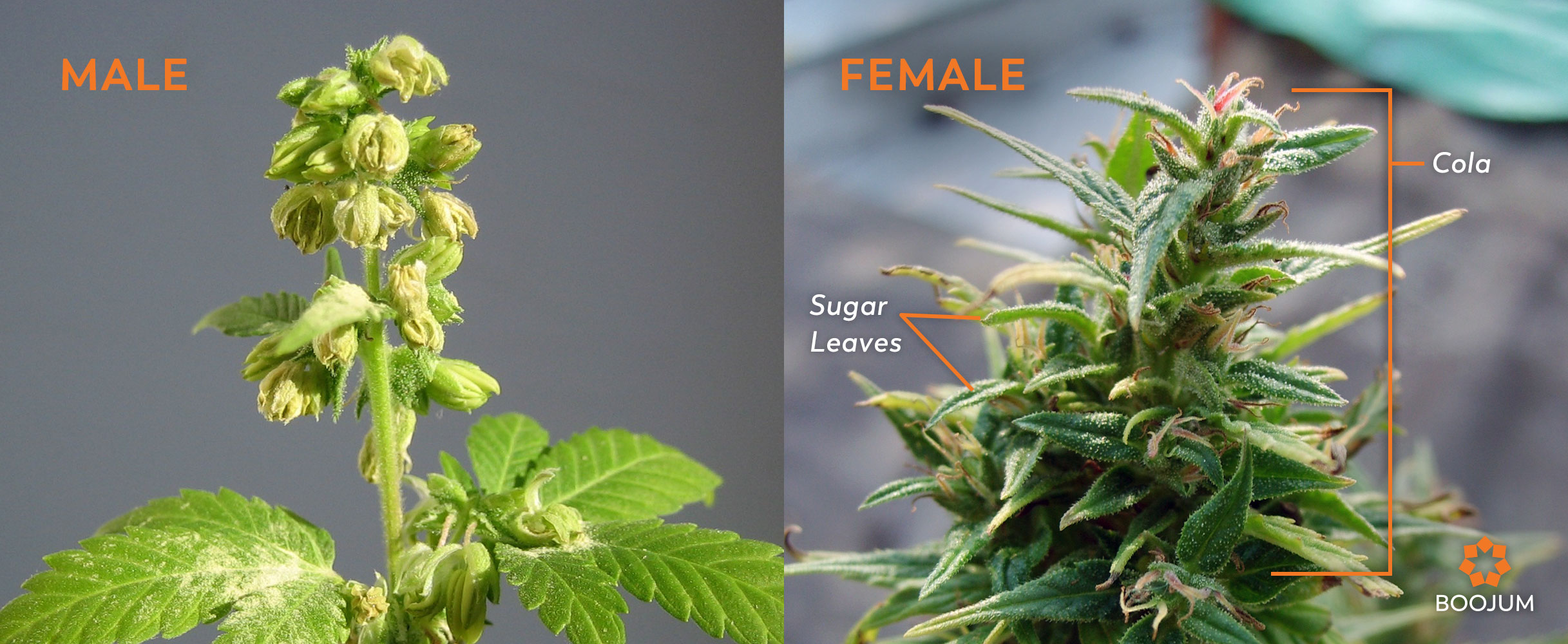
The Next Generation
Seeds can, of course, be useful for germinating the next generation, and this generally takes around 3-7 days in the spring. You can tell whether a plant was grown from seed or clones based on its root system. A seed-grown specimen will have a tap root (basically an underground main stem), while clones have a network of fibrous roots, since they are cut from above-ground roots themselves. As the days lengthen, the leaves and limbs are stimulated, and growth initially occurs in pairs as leaves and then nodes grow out from the main stem. Nodes refer to the places where branches meet the main stem, and as the plant matures, these nodal pairs become asymmetrical. This is where the first flowers will appear, and the place in the plant where the most growth and hormones occur. Clones should always include at least one node, in order to produce rooting hormones for the new cutting.
Trichomes
When females are not pollinated, they put their energy into abundant flower blooms and do not make seeds. These unfertilized females are the goal of almost every cannabis crop. The larger and more robust the flower, the more likely it will have a high cannabinoid yield, since the vast majority of cannabinoids are found on the female’s bracts and sugar leaves. Cannabinoids, specifically cannabidiol, or CBD, are the plant components that we target during extraction. Check out our article on phytocannabinoids for more information on these mighty molecules.
These therapeutic molecules, along with terpenes, are always found in microscopic trichomes, which are the glands responsible for their creation. Cannabis trichomes come in several forms, but the most common resembles a mushroom, with an oily, glandular head sitting atop a long stalk. Not only are they responsible for arguably the most compelling feature of the cannabis plant, trichomes also have their own growth cycle. Enzymes in the secretory cells within the trichome build cannabinoid molecules by connecting smaller molecules together, and filling the glandular heads, swelling them with the oily cannabinoids and terpenes. Trichome heads become increasingly opaque as they reach maturity. As the flower itself matures, the trichome heads falls off – meaning flowers should be harvested before this happens in order to preserve cannabinoids.
Ethanol extraction works well on these trichomes, since it has non-polar properties that draw out the oily cannabinoid molecules. When evaluating plant material to use in our extraction process, we look for high concentrations of trichomes, which make the bracts of the flower appear sticky and resinous, and yield cannabinoids when the glandular heads are opened. Once we’ve extracted and distilled the cannabinoids, we are left with Full Spectrum Distillate (read more about what that means here.)
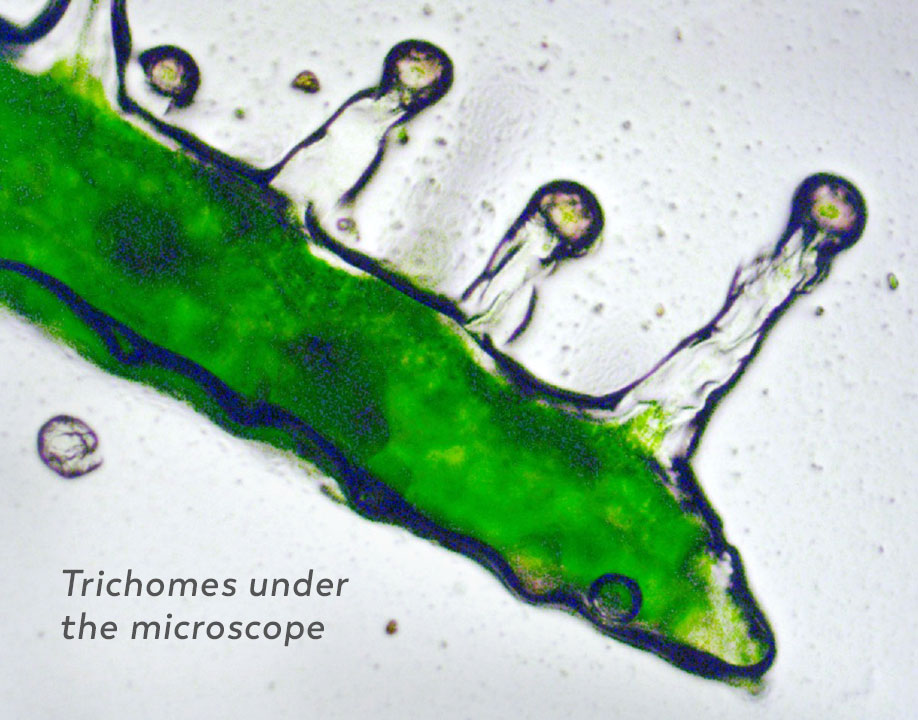
The Inner Workings of Cannabis
Plants rely on two very important inner pathways, and cannabis is no different. The xylem is responsible for keeping the plant hydrated, and it carries moisture and nutrients in the soil, up from the root system to the rest of the plant. The phloem, meanwhile, transports sugars and starches from the leaves to the rest of the plant. Cannabis’ distinctive fan leaves are palmate (resembling an open palm), and work as de facto solar panels, using photosynthesis and sunlight to turn water and CO2 into sugars and starches that the phloem then transports throughout the rest of the plant. The underside of the leaves regulates the plant’s internal processes with stomata. Stomata are microscopic pores that absorb CO2 and release water and oxygen. They open and close as needed, balancing inner temperature and moisture with the external environment. In addition to regulating with existing stomata, plants will change the density of these pores in new leaves depending on their environment.
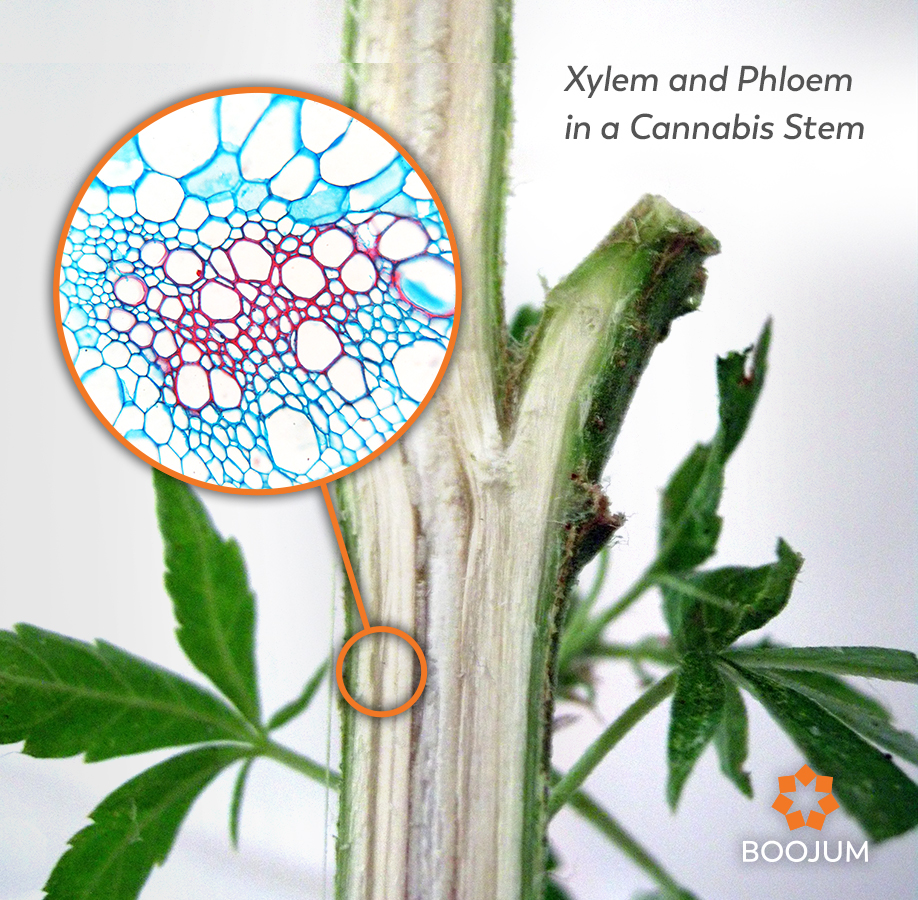
Plant Power
Understanding the biology of the cannabis plant is important for processors and growers, as well as for the informed consumer. As the cannabis industry legalizes and merges into the mainstream, knowledge is power. And if you ask us, the existence of a plant that works with our own endogenous system is almost as wondrous as the idea that it adapts to fit its environment, breathes in the air we breathe out, and makes sugar with the help of a little energy from a star 93 million miles away. As Thomas Edison once wrote, “Until man duplicates a blade of grass, nature can laugh at his so-called scientific knowledge. Remedies from chemicals will never stand in favor compared with the products of nature, the living cell of the plant, the final result of the rays of the sun, the mother of all life.”


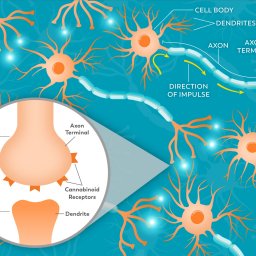

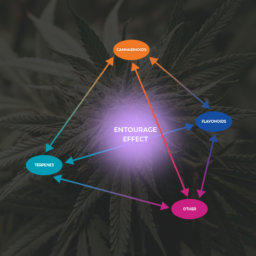

It?¦s really a cool and helpful piece of info. I?¦m glad that you shared this helpful info with us. Please stay us informed like this. Thank you for sharing.
Thanks for reading!!